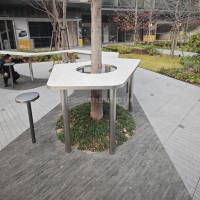Welcome to the website for landscape facilities products and knowledge.
How does the bin’s design ensure it can be easily identified and located in large public spaces?
In large public spaces, effective waste management relies heavily on bins that are easy to identify and locate. Modern bin designs incorporate several key features to achieve this.
1. High-Visibility Colors and Patterns: Bins often use bright, contrasting colors like green, blue, or yellow to stand out against urban backgrounds. Reflective strips or bold patterns further enhance visibility, especially in low-light conditions.
2. Standardized Symbols and Labels: Universal recycling symbols or clear pictograms help users quickly recognize the bin’s purpose, reducing confusion. Multilingual labels cater to diverse populations in high-traffic areas.
3. Strategic Placement and Clustering: Bins are positioned near entrances, walkways, or seating areas, following human traffic flow. Grouping bins (e.g., recycling with general waste) creates convenient waste disposal hubs.
4. Smart Technology Integration: Some bins feature LED indicators, sensors, or digital displays to signal capacity or guide users. Solar-powered lighting ensures nighttime visibility.
5. Ergonomic Shapes and Sizes: Unique silhouettes (e.g., cylindrical vs. rectangular) or oversized designs make bins noticeable while blending with urban aesthetics.
By combining these elements, bin designs optimize functionality and accessibility, promoting cleaner public environments.
Related search:

Recommendation
An outdoor bar counter with stainless steel and terrazzo materials in an irregular shape